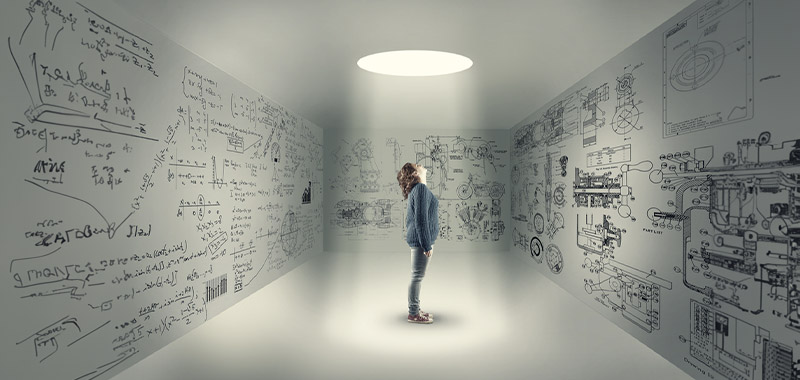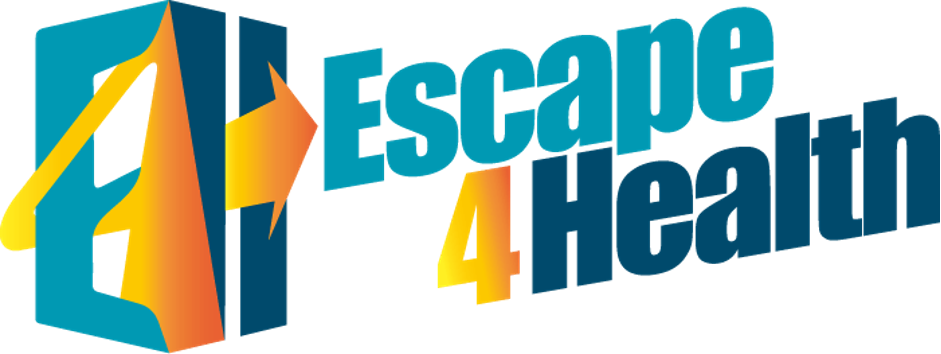
Effective, safe and efficient healthcare that does not burn out the well-being of healthcare professionals relies on the interplay of human, technology, and organization. This interplay is complex, as is learning around this process. Many related aspects need to be considered simultaneously, easily overwhelming both learners and facilitators. Learning about the connections of human, technology, and organization on a theoretical plane, does not capture many of the aspects relevant to optimizing this interplay, for example, emotions, misunderstandings and the dynamic nature of actual care situations. Therefore, learning formats, that allow learners to actually experience this dynamic interplay, are beneficial.
Escape rooms are one such learning format. They are: “[l]ive-action team-based games where players discover clues, solve puzzles, and accomplish tasks in one or more rooms in order to accomplish a specific goal in a limited amount of time”. (1) Escape rooms can be designed to take place in different settings – close to the clinical setting, like a ward, or removed from the clinical setting, in fictitious settings such as an apocalyptic world. (2) The riddles can consequently be close to the actual task of participants or be – at least on the surface – far away from the participants work. However, particularly in the case of the latter, there can be riddles that appear to be different from the tasks in the work-setting, but still preserve some of the key features of work tasks. For example, many healthcare professionals need to collect information from different sources to piece together a coherent picture of the patient – patient records, conversations, test results, etc. This characteristic can be recreated in escape rooms, where participants might need to find information from a book, investigating a piece of furniture, by solving a riddle, etc. The “cover story” is very different, but the core of the task is similar.
There are several reasons for wrapping the core task into different cover stories:
- The core task is “alienated” – it is still similar, but strange at the same time. Participants meet it in different contexts, from different angles, with roles that they are not used to, in a setting that can be very strange. By meeting known dynamics in unfamiliar contexts, often it is possible to gain new insights and make new discoveries. The familiar is made strange and becomes familiar again in a new and extended way. That way, participants can discover new aspects in old experiences, perceptions, interpretations, assumptions, etc.
- The situation becomes playful and therefore less threatening for the participants’ professional identity. Not getting the right information in the apocalypse scenario of the escape room is one thing. Not getting all of the information about the patient in clinical setting is another, with potentially higher impact on one’s self perception.
- The dynamic between participants can get reshuffled (temporarily). Some members might have experience with escape rooms that they can utilize, whilst for other some a specific type of puzzle might be easy to solve and they can shine in new ways.
- The gamification aspects trigger certain competitive aspects in people and many enjoy this aspect for entertainment, whilst also creating learning experiences.
However, there are some important considerations with regards to these dynamics. Some members might feel less competent in the escape room setting than in the work setting and might need extra attention, whilst alienation requires a certain “translation” back to clinical practice, which can happen in a debriefing following the actual escape room experience.
Debriefings turn fun escape room experiences into learning opportunities
Escape room experiences can be debriefed like other experiential learning events. We work with a model that we also use in simulation-based learning consisting of four phases.(3) In the first phase the facilitator sets the scene and establishes ground rules. In the following description phase, participants reconstruct the major steps of their work in the escape room. In the analysis phase, the group reflects about learning goals (e.g. discovering how the various information from different sources were integrated). In the application phase, participants discuss take-home-messages from the scenario.
The translation to clinical practice typically happens during the analysis and application phases. The facilitator investigates with the participants the phenomena that occurred during the escape room (e.g. search patterns to find new information, ways of sharing or not sharing information, integrating information from different sources). After describing those in the escape room setting, the group can then discuss how they relate to clinical work. Do the “same” dynamics also occur in the clinical setting? Is it managed in similar or different ways? Does it have similar effects and dynamics?
Summary
Escape rooms offer learning possibilities for healthcare professionals, because they allow participants see their own habits and approaches in a new light. By taking what is known and making it strange and then reflecting about how this strange version relates to the actual work setting, new and unique learning that can supplement traditional approaches can be generated.
We are currently developing an escape room in the context of an EU-funded project: Escape4Health – https://escape4health.eu
References:
- Nicholson S. Peeking behind the locked door: A survey of escape room facilities. 2015.
- Rosenkrantz O, Jensen TW, Sarmasoglu S, Madsen S, Eberhard K, Ersbøll AK, et al. Priming healthcare students on the importance of non-technical skills in healthcare: How to set up a medical escape room game experience. Medical Teacher. 2019;41(11):1285-92.
- Steinwachs B. How to facilitate a debriefing. Simulation & gaming. 1992;23(2):186-95.
Written by Peter Dieckmann(1,2) & Lucy Bray(2)
(1) Department of Quality and Health Technology, University in Stavanger, Norway
(2) Copenhagen Academy for Medical Education and Simulation (CAMES) Herlev, Capital Region of Denmark




